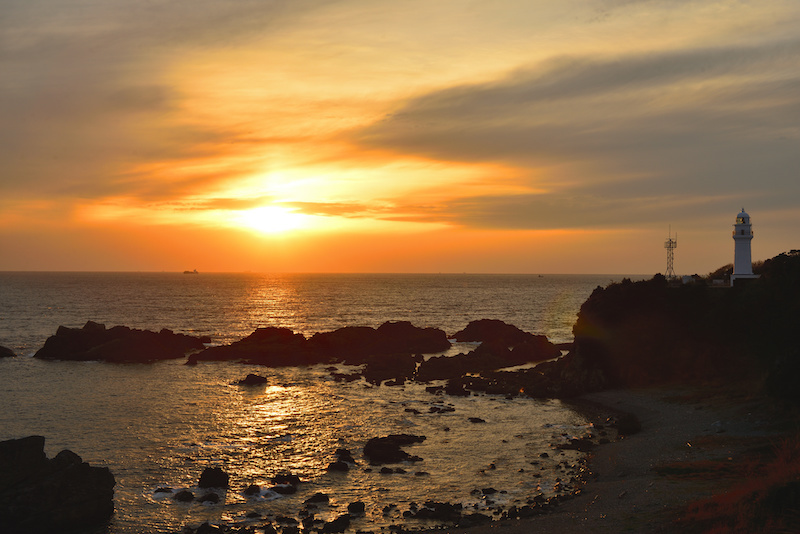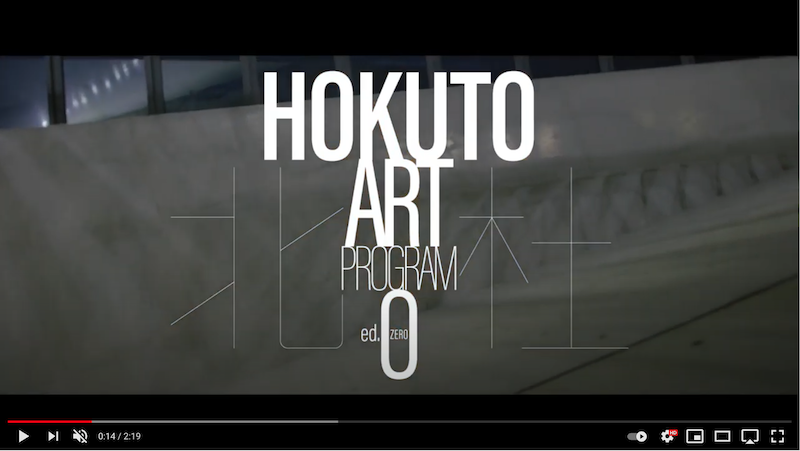Do you like traveling?
I feel like I like it more and more as I get older.
Looking back on my motivations and destinations for travel in my youth—school trips, field trips, family vacations, club hikes (I was in the mountaineering club in high school)—it often felt like I never strayed far from the predetermined path.
I finally put the idea of "Go wherever you want, whenever you feel like it!"
I finally put this into action when I was 20, a university student.
Inspired by a book I happened to find in a bookstore titled "Touring Hokkaido on a Moped," I became intensely drawn to the idea of a "wandering journey." I invited some friends from my lab and set off on a moped touring trip, sleeping outdoors.
The overwhelmingly vivid experiences gained from that moped wandering journey
The route was planned to circle the Kii Peninsula in three days, starting and ending at the Kyoto Imperial Palace.
Writing it like this might make it sound well-planned, but in reality, it was a completely improvised tour: we rode as far as we could from morning till night, ate when we got hungry, and camped at the nearest roadside station we reached when night fell.
There was just one rule we agreed on with my companions.
That was: "Stop freely wherever any member feels like it."
Whether it was intriguing food, captivating scenery, a bizarre sign that caught our eye, or even the basic human need for a restroom break – those moments when you just have to stop the bike come regardless of your intentions.
If you're traveling by train, plane, or car on the highway, casually taking detours is difficult. But riding a moped, with its subtle speed, means you can stop anytime with a "Hey, just here!" kind of feeling. This naturally hones your "sense of when to stop."
This was the dawn of the internet era. Searching for information beforehand was pointless; there were few websites, and almost no information was available.
We naturally enjoyed the freedom of travel, stopping our bikes on impulse at the sight of enticing keywords like "southernmost point of Honshu," "famous hot springs," or "freshly caught tuna" that caught our eye from the roadside, or at the sight of a sunset fading in an instant.
As we continued, enjoying these spontaneous stops, we came across a place called "Lover's Cape" (located in Susami Town, Wakayama Prefecture).
"What a romantic place!"
Three guys parked their bikes at Lover's Cape and watched the twilight. But that emotional mood was short-lived. We were stunned by this sign, boldly displayed right next to us.
'No Peeing Here'
"So, is it atmospheric or not? Which is it?! I wanna show this to someone right now~"
It was the late 1990s. The internet was still in its primitive days, and smartphones obviously didn't exist yet. So even in such a perfect moment, the actions available were limited.
Whenever we encountered beautiful scenery, delicious food, or something surreal and strange, the only thing that could contain our urge to press the shutter was the film-based camera (also called an instant camera) "Sharu Nandesu," which had a limited number of shots. We recorded each and every one with the utmost care.
Amidst this, an experience too vivid to even permit recording with an instant camera struck us.
It happened as we passed through Owase (a prefectural road connecting Mie and Nara Prefectures), reputed to be Japan's wettest spot – a fact likely taught in every social studies textbook.
Our group of mopeds groaned its way up the steep mountain slope (no matter what brand of bike you rode, your speed dropped dramatically).
Nature, as if aiming for our slow passage, unleashed a downpour like the world's buckets were simultaneously overturned. Visibility was gone; even the silhouette of the bike we straddled blurred into obscurity.
In that instant, beyond mere discomfort, a sensation akin to exhilaration enveloped each of us. It was the "reality only we could feel at that moment" – the realization that "We are now in that very place described in textbooks. This rainfall? The heaviest I've ever experienced in Japan!"
Travel and trouble share the same root... or do they!?
Well, let's wrap up this overly long preamble and get to the main topic.
The theme for the second installment of this series is "Travel."
From the perspective of "Undiscovered Benefit" (UDB), which I introduced last time, let's consider: "Why do people feel the urge to travel?" and "What makes a trip truly memorable?"
[Hypothesis]
People seek "the unexpected" in travel somewhere along the way.
(Both positive and negative events occur during most journeys, yet looking back, only the positive memories seem to remain)
Let's take this personal observation as our starting point (do you share a similar feeling?).
Since there's no survey data, this is strictly the author's personal N=1 experience (whether it can be proven will be left to the activities of the UDB Joint Research School). However, when considering "How can we obtain this benefit?" using UDB,
"Deliberately maintaining an incomplete reason for going there (not fully knowing what awaits until you actually go)"
"Placing oneself in a state where thorough investigation is impossible"
These requirements come to mind.
Hearing just this, some might naturally say, "That sounds nothing but anxiety." Undoubtedly, researching information beforehand before visiting feels safer and more secure.
But
if it were a trip where "Googling reveals everything (spoiler alert), and you find absolutely nothing beyond what's in the guidebook" (let's deliberately take it to that extreme), would you want to spend your limited time and money on such a trip?
(*Here, we're assuming it's a place you're visiting for the first time. If you've been multiple times and understand its value, you likely wouldn't feel this way.)
When I posed this question to Professor Koji Kawakami of Kyoto University, who advocates for "inconvenience benefits," he responded:
he responded with the phrase, "I believe travel and trouble share the same root,"
This response, whose veracity is unclear (though it carries a certain ring of truth), actually contains an important implication.
Professor Kawakami himself doesn't own a smartphone, or even a flip phone, so when visiting unfamiliar places, he deliberately minimizes prior information gathering to enjoy a "mini-trip sensation." When asked the FAQ, "What about meeting appointments or business negotiations?", he immediately responds with his thorough approach: "I head out early, anticipating that something might happen."
Don't you think that simply adopting this mindset could dramatically increase the chances of your ordinary daily trips becoming "dramatic little adventures"? (Consider this a lesson: next time you're heading out, try turning off your smartphone.)
The "Unpredictable Something" Seen in Hokuto City's Night Art Event
Here,
people seek "something unexpected" in their travels
I'd like to share one example that embodies this hypothesis.
On December 5, 2020, the one-night-only night art event " HOKUTO ART PROGRAM ed.0 (edition zero) " was held in Hokuto City, Yamanashi Prefecture, inviting 100 guests.
Set in a scenic location renowned for Japan's highest average sunshine hours, surrounded by the Southern Alps and Yatsugatake Mountains. A source of pristine natural water, it offers cuisine featuring locally produced vegetables, game meat, and spirits like whisky and sake made from this water. While known for luxury travel and family outdoor activities, this region is also one of Japan's top locations for the concentration of museums and art galleries within a single municipality.
While 2020 ultimately saw a stagnation in inbound tourism from overseas, this event was selected through a nationwide competition as a strategic tourism value creation project under the category of "creating tourism demand through effective use of nighttime and early morning hours." It was realized in a limited capacity with thorough COVID-19 countermeasures in place.
On this special night, museums that would normally close in the evening remained open until late. A one-night-only event combined music and art with locally sourced food and drinks.
The centerpiece was architect Junya Ishigami's work "Sora to Tsuchi ni Kiyeru" ("Heaven and Earth Appear"). Based on the concept that "architecture races through ten thousand years of time in an instant and decays," this piece featured a massive ice structure melting away over five hours by fire. Chara performed a one-time live concert before the collapsing ice—a spectacle rarely seen anywhere.
Furthermore, this performance, along with numerous exhibitions and live shows by an impressive lineup of artists, came together under the frigid night sky of Seishun Art Village, complete with its outdoor garden. It was an unprecedented project, where the vast starry sky and dancing flames (sparks) merged into one space.
Each artist performing or exhibiting that day, including Mr. Ishigami, presented works inspired by the great nature of Hokuto City.
Please watch this video.
Crucially, this event was a one-night-only affair (more precisely, just five hours that evening), with absolutely no alternative viewing options like online streaming.
In other words, only the "people" who made the trip there could experience it.
So, what were the things that only the "people" physically present could perceive?
The answer, which the above footage doesn't convey, had two parts.
- The temperature in Hokuto City at 6 PM that day was below freezing.
- Warm areas were provided inside the bitterly cold venue, where local premium sake and BBQ prepared by chefs from Seishun Art Village were served.
The "something unexpected" at this event was
"live performances you couldn't witness unless you were there"
and "an experience that made you acutely aware of your own physical existence" (in this case, the cold and hunger, followed by warmth and fullness).
can be said to have been the "something unexpected" at this event.
Finally, let us introduce the concept of the HOKUTO ART PROGRAM.
"In this VUCA era, experiences that etch something tangible into your heart grow ever more valuable. We believe the feeling of 'only now, only here, only me'—something internet searches can never provide—is the origin of humanity's fundamental joy."
Precisely because we live in an era of "anytime, anywhere, anyone," we consciously embrace the opposite.
The unique value found only in that moment, only in that place, is the very accumulation of time and the sentiments of the people who have lived there.
What the tourism industry needs going forward is to rediscover and refine these irreplaceable values, incorporating an outsider's perspective. By consciously seeking "Undiscovered Benefit"—including the inconvenience—the impact multiplies exponentially. We envision such endeavors emerging across Japan in 2021.
The application deadline for the 'Undiscovered Benefit' Joint Research Community, launching in April 2021 with Smiles and Dentsu Inc., is just 5 days away. While we can't predict whether it will be helpful for those considering applying, an interview with Smiles Director and CCO Mr. Nozaki and Mr. Matsui discussing 'Why This Community Was Born' will be released soon. Check out "Learning RADIO" via this application site.
https://smkn.smiles.co.jp
The third and final episode features a conversation between Professor Kawakami of Kyoto University and Mr. Nozaki, CCO of Smiles. Stay tuned!






